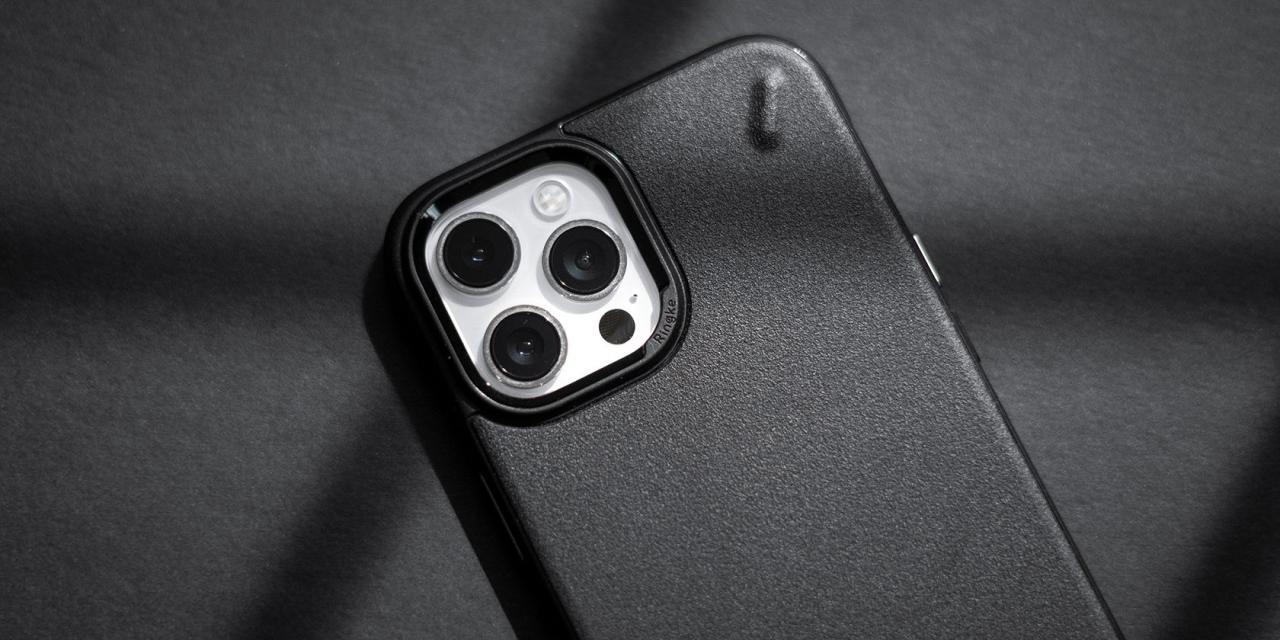Breathing techniques are powerful tools for managing stress and anxiety in today’s fast-paced world. This comprehensive guide explores the science behind controlled breathing and provides practical strategies for incorporating these techniques into your daily life. From simple exercises to advanced methods, we’ll equip you with the knowledge and skills to navigate challenging situations with greater composure and calm.
Understanding how different breathing patterns affect the body’s physiological response to stress is crucial. This guide delves into the science behind these techniques, offering clear explanations and practical applications to empower you to find your inner peace.
Introduction to Breathing Techniques for Calm

Breathing techniques are powerful tools for managing stress and anxiety. By consciously regulating our breath, we can influence our body’s physiological responses, calming the nervous system and promoting a sense of inner peace. These techniques are increasingly recognized for their effectiveness in reducing stress-related symptoms and fostering overall well-being.
| Heading | Explanation |
|---|---|
| Importance of Breathing Techniques | Controlled breathing directly impacts the autonomic nervous system, influencing the body’s response to stress. Slow, deep breaths activate the parasympathetic nervous system, counteracting the fight-or-flight response triggered by stress hormones. This allows for a calmer state of mind and body. |
| Impact of Different Breathing Patterns | Various breathing patterns, such as diaphragmatic breathing, alternate nostril breathing, and box breathing, can induce different physiological responses. Each pattern affects heart rate, blood pressure, and the release of stress hormones in distinct ways, tailoring the calming effect to individual needs. |
| Science Behind Calming Effects | The science behind the calming effects of controlled breathing lies in its impact on the body’s physiological systems. Slow, deep breaths increase oxygen intake, reducing feelings of panic and promoting relaxation. The interplay of nerve signals and hormonal regulation, as mediated by the breath, contributes significantly to the overall sense of calm. |
Physiological Effects of Controlled Breathing
Controlled breathing techniques directly affect the body’s physiological responses. By slowing down and deepening the breath, individuals can stimulate the parasympathetic nervous system, which counteracts the stress response initiated by the sympathetic nervous system. This shift in the balance of these two systems is crucial in reducing stress and promoting relaxation.
Types of Breathing Techniques
Different breathing techniques offer unique approaches to managing stress. Each method focuses on various aspects of the breath, leading to distinct physiological effects.
- Diaphragmatic Breathing: This technique involves engaging the diaphragm, the primary muscle of respiration, to draw air deep into the lungs. By focusing on the expansion of the abdomen, individuals can slow their breath and promote a sense of relaxation.
- Alternate Nostril Breathing (Nadi Shodhana): This ancient practice involves inhaling through one nostril and exhaling through the other, often accompanied by a specific rhythm. The alternating flow of breath is believed to balance the energy channels in the body, leading to a sense of calm and focus.
- Box Breathing: This method involves inhaling for a count of four, holding the breath for a count of four, exhaling for a count of four, and holding the breath again for a count of four. The rhythmic nature of this technique promotes a sense of control and stability, reducing feelings of anxiety.
Practical Application and Considerations
Breathing techniques can be incorporated into daily life to manage stress and anxiety effectively. Consistency and practice are key to experiencing the full benefits. It’s important to find a technique that resonates with individual preferences and practice regularly, even for short periods, to cultivate a sense of calm.
Common Breathing Techniques

Understanding various breathing techniques is crucial for effectively managing stress and promoting calmness. These techniques offer a powerful toolset for regulating the body’s physiological responses to anxiety-provoking situations. By practicing these techniques consistently, individuals can develop a greater sense of control over their emotional state.
Popular Breathing Techniques for Calming
A range of breathing techniques can effectively induce a state of calm. The following five are commonly used and well-researched for their calming effects.
Box Breathing
Box breathing, also known as square breathing, is a simple yet effective technique for reducing stress and anxiety. It involves inhaling, holding, exhaling, and holding for equal durations.
- Inhale: Breathe in slowly and deeply through your nose, filling your lungs completely. Focus on the sensation of air entering your body.
- Hold: Pause for a moment, holding your breath gently.
- Exhale: Slowly exhale through your mouth, emptying your lungs completely. Focus on the sensation of air leaving your body.
- Hold: Pause for a moment, holding your breath gently.
Diaphragmatic Breathing
Diaphragmatic breathing, or belly breathing, is a technique that engages the diaphragm, the primary muscle responsible for breathing. This method promotes relaxation and reduces feelings of anxiety.
- Position: Lie down on your back or sit comfortably with your spine straight.
- Placement: Place one hand on your chest and the other on your belly.
- Inhale: Inhale slowly and deeply through your nose, allowing your belly to rise as your diaphragm expands.
- Exhale: Exhale slowly and completely through your mouth, allowing your belly to fall as your diaphragm relaxes.
Alternate Nostril Breathing (Nadi Shodhana)
Alternate nostril breathing is a yogic practice that balances the flow of energy in the body. This practice can reduce stress and promote relaxation.
- Position: Sit comfortably with your spine straight.
- Hand Placement: Place your right hand on your left knee, and use your right thumb to close your right nostril.
- Inhalation: Inhale through your left nostril.
- Exhalation: Close your left nostril with your ring finger and exhale through your right nostril.
- Repeat: Repeat this process, inhaling through the left nostril and exhaling through the right, then inhaling through the right and exhaling through the left.
4-7-8 Breathing
The 4-7-8 breathing technique is a simple method for quickly calming the nervous system. It can be effectively used to reduce stress and anxiety.
- Inhale: Inhale through your nose for a count of four.
- Hold: Hold your breath for a count of seven.
- Exhale: Exhale completely through your mouth for a count of eight.
- Repeat: Repeat this cycle several times.
Resonant Breathing
Resonant breathing involves consciously connecting with the rhythm of the body’s natural breathing pattern. It focuses on the breath’s ability to soothe the nervous system.
- Awareness: Pay close attention to the sensation of your breath entering and leaving your body.
- Slowing: Gently slow down your breathing rate, focusing on the natural rhythm.
- Full Cycle: Observe the entire breath cycle—inhalation, pause, exhalation—without forcing any changes.
Comparison of Breathing Techniques
| Technique Name | Steps | Benefits | Variations |
|---|---|---|---|
| Box Breathing | Inhale, hold, exhale, hold (equal duration) | Reduces stress, improves focus | Varying durations for different needs |
| Diaphragmatic Breathing | Belly rises on inhale, falls on exhale | Promotes relaxation, reduces anxiety | Can be combined with other techniques |
| Alternate Nostril Breathing | Inhale/exhale through alternate nostrils | Balances energy, promotes calmness | Different breathing ratios possible |
| 4-7-8 Breathing | Inhale 4, hold 7, exhale 8 | Quick relaxation, reduces anxiety | Can be adapted to personal comfort |
| Resonant Breathing | Follows natural rhythm | Deep relaxation, enhanced awareness | Can be used in conjunction with other practices |
Physiological Mechanisms
These techniques work by activating the parasympathetic nervous system, which is responsible for the body’s “rest and digest” response. By slowing down breathing, these techniques lower heart rate and blood pressure, reducing feelings of stress and anxiety. They also help regulate the production of stress hormones, like cortisol.
Adjusting Techniques for Individual Needs
The techniques can be adapted to suit individual needs and preferences. For example, individuals with specific physical limitations can modify the duration of breaths or the positions used for certain techniques. Adjusting the pace and depth of breathing can also cater to different needs. It’s important to consult with a healthcare professional if you have any underlying health conditions before starting a new breathing practice.
Practical Application of Breathing Techniques
Incorporating breathing exercises into your daily routine can significantly enhance your ability to manage stress and maintain emotional equilibrium. These techniques are not just for special occasions; they are tools for navigating the everyday challenges that life presents. By understanding how and when to apply these exercises, you can cultivate a greater sense of calm and composure in various situations.Effective breathing techniques are not merely about slowing your breath; they are about consciously regulating your physiological responses to stress.
This conscious control, in turn, allows you to better manage your emotional state and react more effectively to challenging situations. Consistent practice, much like any skill, improves your capacity to use these techniques seamlessly throughout your day.
Incorporating Breathing Exercises into Daily Routines
Consistent practice is key to integrating breathing exercises into your daily life. Start with short sessions, even just a few minutes, several times a day. Find moments throughout your day, such as during your morning routine, before meals, or during short breaks at work, to dedicate to these exercises. Gradually increase the duration and frequency as you become more comfortable.
Examples of When and Where to Use These Techniques
Breathing techniques are highly adaptable and can be applied in a wide range of situations. They are not limited to formal settings; they are valuable tools for everyday life. Their adaptability allows you to modify them based on the specific situation. For instance, a deep, slow breath can be just as effective during a stressful work meeting as it is during a quiet moment at home.
Situations Where Breathing Techniques Are Beneficial
- Before a presentation: Deep, slow breaths can help reduce anxiety and promote a sense of calm, enabling a more confident and composed delivery.
- During a stressful conversation: Controlled breathing can help you remain focused and respond thoughtfully, rather than reacting emotionally.
- While driving in heavy traffic: Breathing exercises can help you stay centered and manage the stress of frustrating commutes.
- During intense workouts: Breathing techniques can help regulate your body’s response to exertion, improving endurance and reducing the feeling of fatigue.
- Experiencing public speaking: Deep breaths can provide a sense of control and calm your nerves.
Modifying Techniques for Different Situations
The application of breathing techniques can be tailored to specific circumstances. For instance, the paced breathing technique might be particularly useful during intense workouts, enabling you to regulate your breathing in line with your physical exertion.
Scenario-Based Application of Breathing Techniques
| Scenario | Breathing Technique | Expected Outcome |
|---|---|---|
| Public speaking | Diaphragmatic breathing, combined with visualization of a peaceful scene | Reduced anxiety, improved composure, and a more confident delivery. |
| Conflict with a colleague | Box breathing, with a focus on slow, controlled exhalations | Maintaining composure, allowing for a more productive and respectful conversation. |
| Unexpected traffic jam | Paced breathing, focusing on slow and deep breaths | Reduced stress, and a more relaxed and patient approach to the situation. |
| High-intensity workout | Alternate nostril breathing, synchronizing breaths with physical movements | Improved endurance, reduced feelings of fatigue, and a more efficient workout. |
Advanced Techniques and Variations
Mastering basic breathing techniques lays the foundation for a calm and focused mind. However, for deeper relaxation and stress management, advanced techniques and variations can be incredibly beneficial. These approaches often involve more intricate patterns and conscious control, allowing individuals to fine-tune their breathing for specific needs and situations.Expanding on the fundamentals, advanced techniques offer a nuanced approach to managing stress and promoting relaxation.
They allow for a more personalized and targeted experience, adapting to the unique needs of each individual.
Progressive Relaxation
Progressive relaxation, a powerful technique, systematically tightens and releases different muscle groups in the body. This process, combined with controlled breathing, helps to identify and release physical tension. By focusing on specific muscle groups, individuals can identify and address areas of tension. This awareness contributes to a more profound sense of relaxation. By consciously releasing tension, individuals can achieve a sense of deep calm and reduce physical discomfort.
Box Breathing
Box breathing, also known as square breathing, involves inhaling, holding the breath, exhaling, and holding the breath again, all for equal durations. This rhythmic pattern creates a sense of stability and control, particularly helpful in managing anxiety and panic attacks. The controlled nature of box breathing provides a tangible anchor during periods of high stress, fostering a sense of calm.
It can be a practical tool for quickly regaining composure in challenging situations.
Variations and Adaptations for Specific Needs
Certain variations and adaptations of these techniques can cater to individuals with specific medical conditions. For example, individuals with respiratory issues may need to modify the duration of inhalation and exhalation to accommodate their needs. Consultations with healthcare professionals are crucial to determine appropriate adaptations for specific conditions. Such modifications ensure the safety and effectiveness of the technique for individuals with pre-existing health concerns.
Comparison of Breathing Techniques for Stress Management
| Technique | Trigger | Description | Advantages |
|---|---|---|---|
| Progressive Relaxation | Muscle tension, anxiety | Systematically tightening and releasing muscle groups while focusing on controlled breathing. | Reduces physical tension, promotes deep relaxation, helps identify and address stress sources. |
| Box Breathing | Panic attacks, anxiety, stress | Inhaling, holding, exhaling, and holding breath for equal durations. | Creates a sense of control, stabilizes the mind, quickly calms the body. |
| Diaphragmatic Breathing | Stress, anxiety, shallow breathing | Deep breaths focused on the diaphragm, expanding the abdomen. | Improves oxygen intake, reduces stress hormones, promotes relaxation and calmness. |
| Alternate Nostril Breathing | Stress, anxiety, focus | Inhaling through one nostril, exhaling through the other, alternating. | Calming, improves focus, enhances awareness. |
Combining Techniques for Enhanced Effectiveness
Combining different breathing techniques can enhance their effectiveness. For instance, using progressive relaxation to identify and release tension, followed by box breathing to regain composure, can create a synergistic effect. The integration of various approaches allows individuals to tailor their strategies to address diverse stress triggers and promote a comprehensive sense of well-being. This multi-faceted approach can significantly impact the management of stress.
Illustrations and Visual Aids

Visual aids play a crucial role in enhancing understanding and retention of complex concepts, particularly when it comes to learning breathing techniques. Effective visuals can transform abstract ideas into tangible representations, making the process of mastering these techniques more accessible and engaging. By incorporating various visual elements, learners can grasp the mechanics of breathing and its impact on the body more readily.
Visualization Exercise for Breathing
A powerful visualization exercise involves imagining a breath as a gentle wave. Imagine the wave originating from the base of your spine, expanding upwards through your chest and filling your lungs. This visualization helps connect the physical act of breathing with a sense of calm and expansion. Visualize the wave’s smooth return as you exhale, releasing tension and stress with each breath.
This mental imagery can be particularly helpful in grounding individuals during stressful moments, promoting a sense of control and awareness.
Visual Aid for Breathing Technique Steps
A visual aid demonstrating the steps of a specific breathing technique, such as diaphragmatic breathing, can significantly improve comprehension. A diagram, presented as a series of sequential images, can illustrate the process effectively.
<div class="breathing-steps">
<img src="step1.jpg" alt="Step 1: Inhale">
<p>Step 1: Place one hand on your chest and the other on your stomach. Inhale slowly and deeply, feeling your stomach expand while your chest remains relatively still.</p>
<img src="step2.jpg" alt="Step 2: Exhale">
<p> Step 2: Exhale slowly, feeling your stomach return to its normal position while your chest relaxes.</p>
<img src="step3.jpg" alt="Step 3: Repeat">
<p> Step 3: Repeat this process for several breaths, focusing on the sensation of your stomach rising and falling.</p>
</div>
This structured visual aid, using sequential images with concise captions, makes the technique’s steps easily digestible and memorable.
Infographic on Physiological Response to Breathing Patterns
An infographic can effectively illustrate the physiological response of the body to various breathing patterns. This infographic would present different breathing styles, such as shallow breathing, deep breathing, and controlled breathing, and correlate them with the body’s corresponding physiological responses. For instance, shallow breathing might be associated with increased heart rate and elevated stress hormones, while deep breathing could be linked to a decreased heart rate and a calming effect on the nervous system.
Infographic on Breathing and Stress Reduction
An infographic illustrating the correlation between breathing and stress reduction should visually represent the relationship. It could use icons, colors, and graphics to highlight the impact of different breathing techniques on stress hormones and physiological responses. The graphic could include a simple diagram of the body’s stress response system, with arrows connecting breathing techniques to the relaxation response.
A key would define the various components and provide clear explanations.
<div class="stress-reduction-infographic">
<img src="stress-response.jpg" alt="Stress Response Diagram">
<ul>
<li>Deep Breathing: Reduces cortisol (stress hormone) levels, promotes relaxation.</li>
<li> Controlled Breathing: Calms the nervous system, lowers heart rate.</li>
<li> Mindfulness Breathing: Fosters awareness of the present moment, reducing anxiety.</li>
</ul>
</div>
This approach emphasizes visual clarity and conciseness, aiding comprehension of the complex relationship between breathing and stress.
Image Sequence for Practical Application
A step-by-step image sequence can demonstrate the practical application of a breathing exercise in a stressful situation. For instance, the sequence could begin with an image of a person experiencing a stressful situation, such as a work deadline. Subsequent images would illustrate the person consciously employing a breathing technique, like square breathing, and observing the physical and emotional changes as they practice.
The final image would show the person feeling calmer and more composed.
Conclusion

In conclusion, mastering breathing techniques offers a pathway to enhanced well-being and stress management. By understanding the various techniques and their applications, you can cultivate a resilient approach to everyday challenges. This guide provides a roadmap for integrating breathing exercises into your daily routine, empowering you to stay calm and centered amidst life’s complexities.